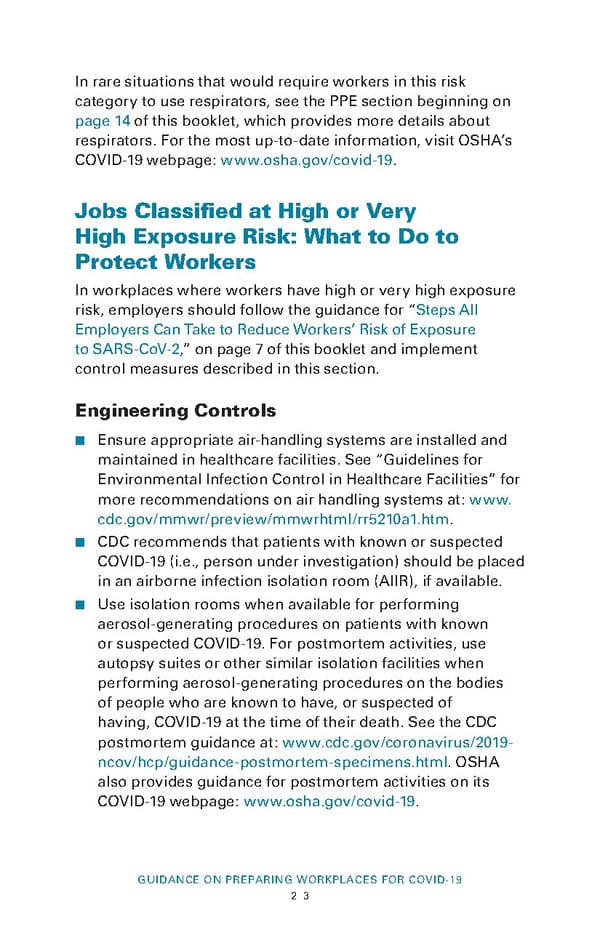In rare situations that would require workers in this risk category to use respirators, see the PPE section beginning on page 14 of this booklet, which provides more details about respirators. For the most up-to-date information, visit OSHA’s COVID-19 webpage: www.osha.gov/covid-19. Jobs Classified at High or Very High Exposure Risk: What to Do to Protect Workers In workplaces where workers have high or very high exposure risk, employers should follow the guidance for “Steps All Employers Can Take to Reduce Workers’ Risk of Exposure to SARS-CoV-2,” on page 7 of this booklet and implement control measures described in this section. Engineering Controls ■ Ensure appropriate air-handling systems are installed and maintained in healthcare facilities. See “Guidelines for Environmental Infection Control in Healthcare Facilities” for more recommendations on air handling systems at: www. cdc.gov/mmwr/preview/mmwrhtml/rr5210a1.htm. ■ CDC recommends that patients with known or suspected COVID-19 (i.e., person under investigation) should be placed in an airborne infection isolation room (AIIR), if available. ■ Use isolation rooms when available for performing aerosol-generating procedures on patients with known or suspected COVID-19. For postmortem activities, use autopsy suites or other similar isolation facilities when performing aerosol-generating procedures on the bodies of people who are known to have, or suspected of having, COVID-19 at the time of their death. See the CDC postmortem guidance at: www.cdc.gov/coronavirus/2019- ncov/hcp/guidance-postmortem-specimens.html. OSHA also provides guidance for postmortem activities on its COVID-19 webpage: www.osha.gov/covid-19. GUIDANCE ON PREPARING WORKPLACES FOR COVID-19 23
 Guidance on Preparing Workplaces for COVID-19
Page 24 Page 26
Guidance on Preparing Workplaces for COVID-19
Page 24 Page 26